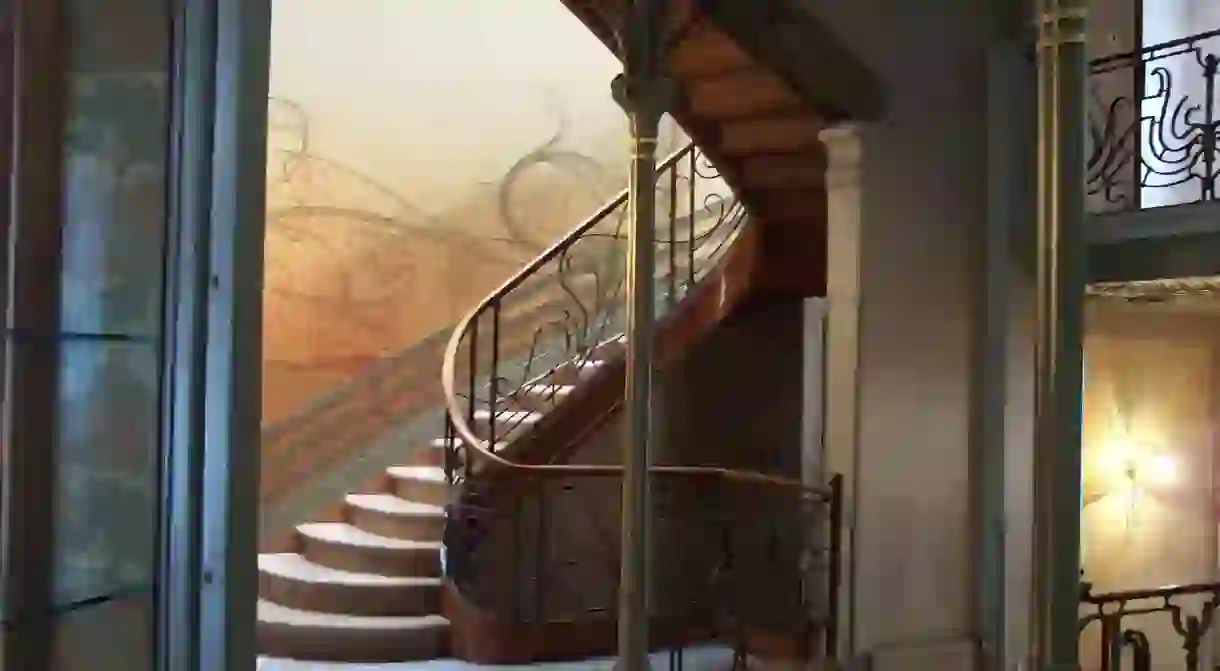Victor Horta: Belgium's Greatest Art Nouveau Architect

Widely known as one of the most influential European architects of the late 19th century, Victor Horta pioneered the Art Nouveau style depicted in a wide variety of beautiful buildings throughout Belgium. Horta pioneered the use of iron and steel while drawing decorative motifs from nature, and his work,s such as the Hotel Tassel, the Hotel Solvay, and the Horta Museum, are now regarded as iconic examples of Art Nouveau architecture.

Born in Ghent in 1861, Horta first studied architecture at the Academie des Beaux-Arts and the Royal Athenaeum in Ghent. After a brief time in France, Horta returned to Belgium and lived in Brussels while he finished his studies, and began to perfect his avant-garde style. His Hôtel Tassel, built in 1893, is considered one of the earliest and finest examples of the Art Nouveau style in architecture. Using iron both structurally and decoratively to create an open and airy floorplan and decorating with his signature ‘biomorphic whiplash’ motif, Horta became a leader in the Art Nouveau movement with his townhouses in and around Brussels.
Art Nouveau flourished in Brussels, especially because the city was developing economically and expanding just as this modern movement became popular, so many middle and upper-class families opted to have their townhouses built in this extravagant and new style. Other Belgian architects who worked alongside Horta include Paul Hankar and Henry van de Velde, both of whom influenced and were influenced by Horta’s innovative spirit.

Art Nouveau represented a major change in European and Western art, architecture, and design. After years of revival styles, Art Nouveau was the first truly ‘new’ style in European art and is considered an important transition into Art Deco and more modern forms of art and architecture. Art Nouveau borrowed motifs from nature while implementing new, modern techniques like the extensive use of cast iron and glass.

Horta’s mid-career was filled with architectural achievements. In addition to his famous townhouses, Horta also designed the Magasins Waucquez, a textile department store that is now the Belgian Comic Strip Museum. One of his finest achievements, La Maison du Peuple (completed in 1899), was a massive headquarters and event hall for the Belgian Workers’ Party, whose iron-and-glass façade was the first of its kind in Brussels. During the First World War, Horta traveled to the United States, lecturing at a number of colleges and even becoming a professor of architecture at George Washington University.
After the war, Horta’s style evolved with the times. Post-WWI architecture was much more austere than the expensive Art Nouveau style, and his designs stayed true to that. The Palais des Beaux-Arts, completed in 1928, is a multi-purpose arts center whose severe design makes it a precursor to the famous Art Deco style. Horta was even made a Baron by King Albert I in 1932. During this time, the Brussels-Central railway station, designed by Horta, was on hold. Started in 1910, the station’s construction began in 1937 and, because of WWII, did not open until 1952. Sadly, this was after Horta had passed away in 1947.

Horta has an important but complex architectural legacy. Art Nouveau, though a significant art movement in the development of current modern styles, fell out of favor, and many beautiful buildings were destroyed in the mid-20th century. This culminated in the destruction of Horta’s Maison du Peuple in 1965, often described as a tragedy in the history of architecture. Afterwards, however, the public began to appreciate Art Nouveau more, and currently, his townhouses are featured on UNESCO’s World Heritage List. It is undeniable that Horta made his mark on Belgian and European architecture, and his designs remain beautiful and impressive to this day.













